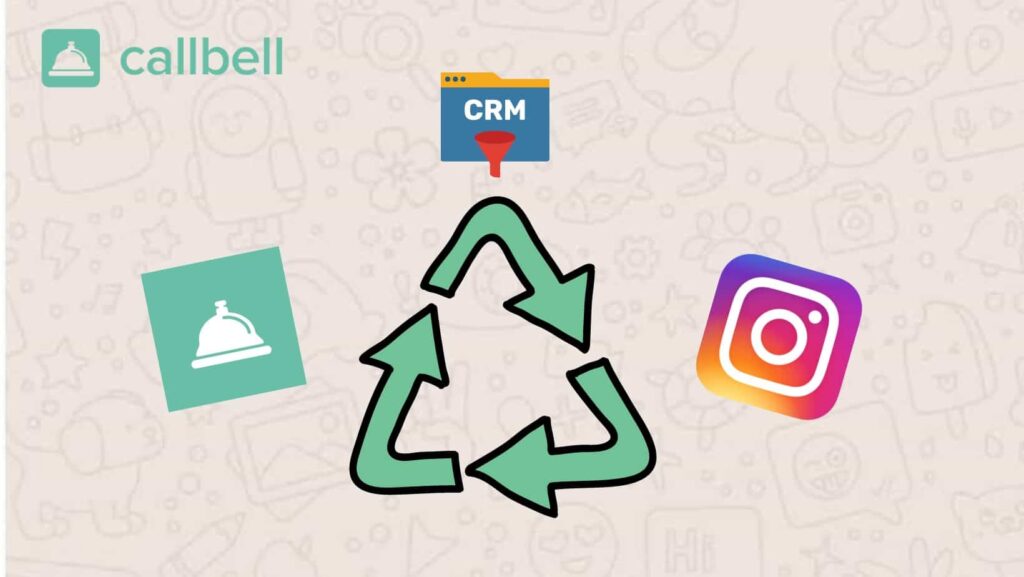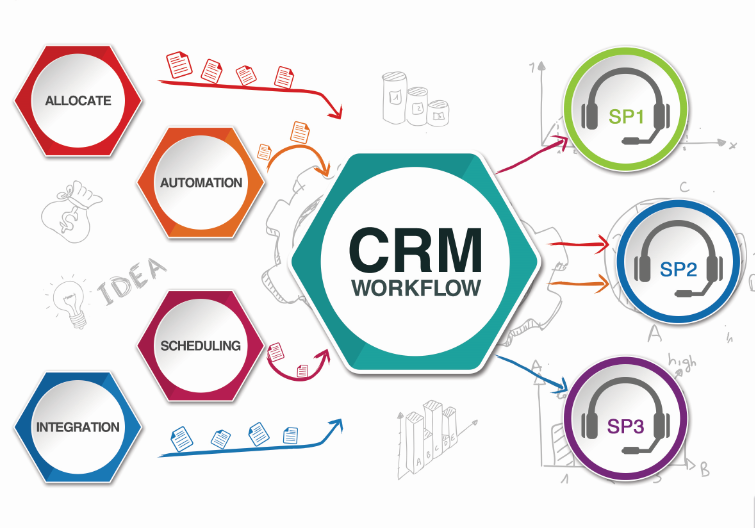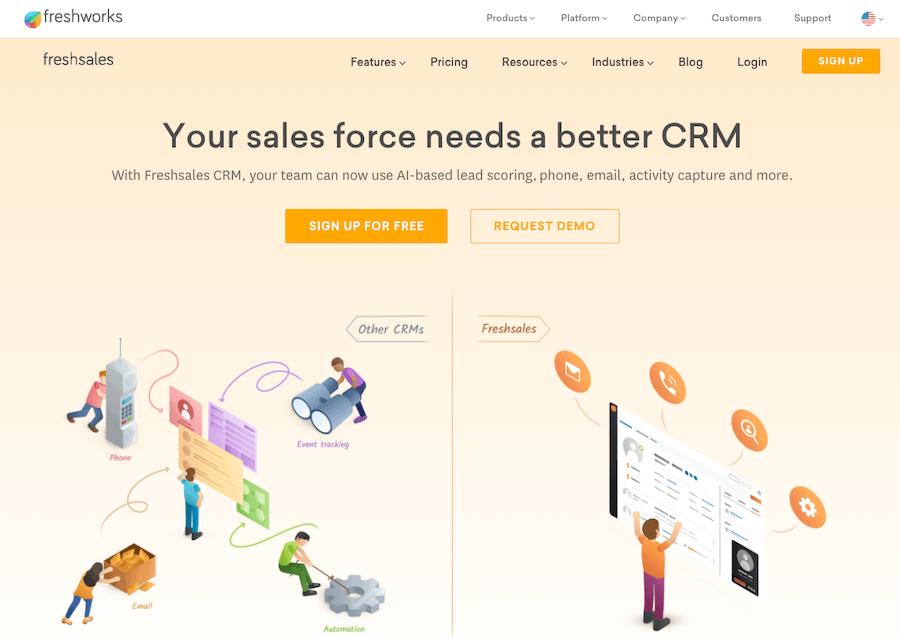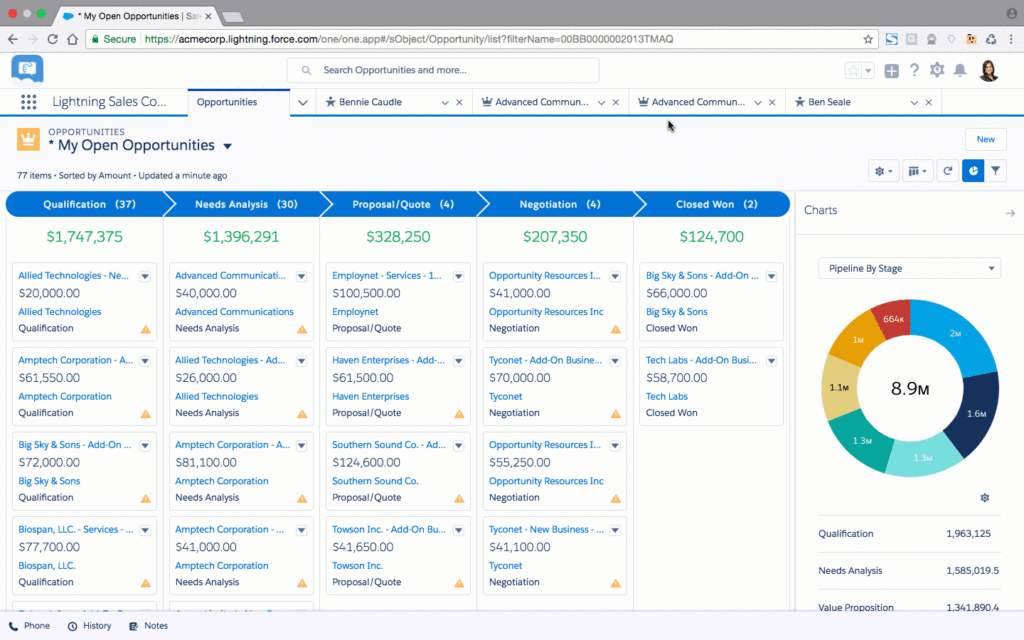
Unlock the Power of Instagram with Seamless CRM Integration
In today’s digital landscape, social media isn’t just a platform for sharing photos and videos; it’s a dynamic hub for customer engagement, lead generation, and ultimately, driving revenue. Instagram, with its massive user base and visual appeal, has become an indispensable tool for businesses of all sizes. But simply having an Instagram presence isn’t enough. To truly harness the platform’s potential, you need a strategic approach that encompasses seamless integration with your Customer Relationship Management (CRM) system.
This comprehensive guide delves deep into the world of CRM integration with Instagram, exploring its benefits, implementation strategies, and best practices. We’ll uncover how this powerful combination can revolutionize your social media strategy, transforming it from a reactive process to a proactive engine for growth. Get ready to discover how to:
- Streamline your social media workflow
- Enhance customer engagement
- Improve lead generation and qualification
- Boost sales and conversions
- Gain valuable insights into customer behavior
Why CRM Integration with Instagram is a Game Changer
Before we dive into the ‘how,’ let’s explore the ‘why.’ Integrating your CRM with Instagram offers a multitude of advantages that can significantly impact your business. Here are some key benefits:
1. Centralized Customer Data
Imagine having all your customer information – contact details, purchase history, communication logs, and social media interactions – consolidated in one centralized location. CRM integration with Instagram makes this a reality. When a customer interacts with your brand on Instagram (e.g., sending a direct message, commenting on a post, or clicking a link), that information is automatically captured and synced with their CRM profile. This 360-degree view of your customers empowers you to:
- Personalize your interactions: Tailor your messaging and offers based on their preferences and past behavior.
- Provide superior customer service: Quickly access their history to address their needs efficiently.
- Identify valuable leads: Spot potential customers based on their engagement and interests.
2. Enhanced Lead Generation and Qualification
Instagram is a goldmine for lead generation. With CRM integration, you can:
- Track leads from Instagram: Identify leads who interact with your content or click on your links.
- Qualify leads: Score leads based on their engagement, helping you prioritize your efforts.
- Automate lead nurturing: Send personalized follow-up messages and offers based on their interests.
3. Improved Customer Engagement and Relationship Building
Building strong customer relationships is crucial for long-term success. CRM integration allows you to:
- Monitor and respond to Instagram interactions: Quickly address comments, mentions, and direct messages.
- Personalize your engagement: Tailor your responses to each customer’s individual needs and preferences.
- Create a consistent brand experience: Ensure a unified message across all your channels.
4. Streamlined Workflow and Increased Efficiency
Manual data entry and switching between different platforms can be time-consuming and inefficient. CRM integration automates many tasks, freeing up your team to focus on more strategic activities. This includes:
- Automated data syncing: Eliminating the need to manually transfer information between platforms.
- Workflow automation: Triggering actions based on specific Instagram interactions (e.g., sending a welcome email to new followers).
- Improved team collaboration: Providing a shared view of customer interactions across all departments.
5. Data-Driven Insights and Reporting
Tracking your Instagram performance is essential for optimizing your strategy. CRM integration provides valuable data and insights, including:
- Engagement metrics: Track likes, comments, shares, and follower growth.
- Lead generation metrics: Monitor the number of leads generated from Instagram.
- Conversion metrics: Measure the number of sales and conversions driven by Instagram.
- Customer behavior analysis: Understand how customers interact with your brand on Instagram.
Choosing the Right CRM for Instagram Integration
Selecting the right CRM is crucial for successful Instagram integration. Here are some popular CRM platforms that offer robust integration capabilities:
1. Salesforce
Salesforce is a leading CRM platform known for its comprehensive features and scalability. It offers a dedicated social media integration solution, allowing you to connect your Instagram account and track interactions directly within the platform. Salesforce is a good choice for businesses that need advanced customization, reporting, and automation.
2. HubSpot CRM
HubSpot CRM is a popular choice for businesses of all sizes, offering a user-friendly interface and a range of marketing, sales, and service tools. HubSpot integrates seamlessly with Instagram, allowing you to track leads, manage conversations, and analyze your social media performance. It’s a great option for businesses looking for an all-in-one solution.
3. Zoho CRM
Zoho CRM is a versatile and affordable CRM platform that offers excellent Instagram integration capabilities. It provides a range of features, including lead management, sales automation, and customer service tools. Zoho CRM is a good option for small to medium-sized businesses looking for a cost-effective solution.
4. Microsoft Dynamics 365
Microsoft Dynamics 365 is a powerful CRM platform that integrates with various Microsoft applications. It offers robust social media integration capabilities, allowing you to manage your Instagram interactions, track leads, and analyze your social media performance. Dynamics 365 is a good choice for businesses that already use other Microsoft products.
5. Pipedrive
Pipedrive is a sales-focused CRM that’s known for its ease of use and visual pipeline management. While it doesn’t have native Instagram integration, it often integrates via third-party apps or Zapier, allowing you to connect your Instagram account and track leads. Pipedrive is a good option for sales teams looking for a straightforward CRM.
When choosing a CRM, consider the following factors:
- Features: Does the CRM offer the features you need, such as lead management, contact management, and social media integration?
- Ease of Use: Is the CRM user-friendly and easy to navigate?
- Integration Capabilities: Does the CRM integrate with Instagram and other platforms you use?
- Scalability: Can the CRM grow with your business?
- Pricing: Is the CRM affordable and within your budget?
- Customer Support: Does the CRM provide good customer support?
Implementing Instagram Integration with Your CRM: A Step-by-Step Guide
Implementing CRM integration with Instagram can seem daunting, but the process is straightforward. Here’s a step-by-step guide:
1. Choose Your CRM and Instagram Integration Method
As mentioned earlier, you’ll need to select a CRM that supports Instagram integration. There are generally two methods for integration:
- Native Integration: Some CRMs, like Salesforce and HubSpot, offer native integration with Instagram. This means that the integration is built directly into the CRM, making it easier to set up and use.
- Third-Party Integration: Other CRMs may require you to use a third-party integration tool, such as Zapier or Integromat, to connect with Instagram. These tools act as a bridge between your CRM and Instagram, allowing you to automate tasks and sync data.
2. Connect Your Instagram Account to Your CRM
The process of connecting your Instagram account to your CRM will vary depending on the platform you’re using. However, the general steps are as follows:
- Log in to Your CRM: Access your CRM account and navigate to the settings or integration section.
- Find the Instagram Integration: Look for the Instagram integration option. It might be under social media integrations, marketing integrations, or similar.
- Connect Your Account: Follow the prompts to connect your Instagram account. You’ll likely need to enter your Instagram username and password and grant the CRM permission to access your account.
- Authorize the Connection: Grant the necessary permissions to the CRM to access your Instagram data.
3. Configure Your Integration Settings
Once your account is connected, you’ll need to configure the integration settings. This may involve:
- Mapping Fields: Specify which data fields from Instagram should be synced with your CRM (e.g., username, email address, phone number).
- Setting Up Automation Rules: Define rules to automate tasks, such as creating new contacts in your CRM when someone follows you on Instagram or sending automated welcome messages.
- Choosing Data to Sync: Decide which data points you want to sync between Instagram and your CRM (e.g., comments, mentions, direct messages, and more).
4. Test Your Integration
Before you fully launch your integration, it’s crucial to test it thoroughly to ensure that data is syncing correctly. Create a test contact in your CRM and interact with your Instagram account to see if the data is being updated as expected. Check the following:
- Lead Capture: Ensure that leads who interact with your Instagram content are being captured in your CRM.
- Data Accuracy: Verify that the data being synced is accurate and complete.
- Automation Triggers: Confirm that your automation rules are working as intended.
5. Train Your Team
Once the integration is set up and tested, train your team on how to use it. Explain the new features, workflows, and best practices. Provide them with the necessary documentation and support to ensure they can use the system effectively. Make sure your team understands how to leverage the integrated data to:
- Respond to inquiries promptly.
- Personalize interactions.
- Nurture leads effectively.
6. Monitor and Optimize
After launching your integration, continuously monitor its performance. Track key metrics, such as lead generation, customer engagement, and conversion rates. Analyze the data to identify areas for improvement and make adjustments to your settings as needed. Regular review and optimization will ensure you’re maximizing the benefits of your CRM integration with Instagram.
Best Practices for CRM Integration with Instagram
To maximize the effectiveness of your CRM integration with Instagram, follow these best practices:
1. Define Clear Goals and Objectives
Before you start integrating, define your goals and objectives. What do you hope to achieve with this integration? Are you trying to generate more leads, improve customer engagement, or increase sales? Having clear goals will help you prioritize your efforts and measure your success.
2. Segment Your Audience
Segment your Instagram audience based on their interests, demographics, and engagement levels. This allows you to personalize your messaging and target your content more effectively. Use your CRM to track and segment your audience data.
3. Use Instagram’s Business Tools
Instagram offers a variety of business tools that can help you manage your account, track your performance, and engage with your audience. These include:
- Instagram Insights: Provides data on your followers, content performance, and audience demographics.
- Instagram Shopping: Allows you to sell products directly from your Instagram posts.
- Instagram Ads: Lets you run targeted ads to reach a wider audience.
4. Create Engaging Content
The success of your Instagram strategy depends on the quality of your content. Create visually appealing and informative content that resonates with your target audience. Use a variety of formats, such as photos, videos, stories, and reels, to keep your audience engaged.
5. Respond Promptly to Interactions
Monitor your Instagram account regularly and respond promptly to comments, mentions, and direct messages. This shows your audience that you care about their feedback and are committed to providing excellent customer service. Use your CRM to track and manage your interactions.
6. Personalize Your Interactions
Use the data from your CRM to personalize your interactions. Address customers by name, reference their past interactions, and tailor your messaging to their individual needs and preferences. This helps you build stronger relationships and increase customer loyalty.
7. Automate Where Possible
Use automation to streamline your workflow and save time. Automate tasks, such as sending welcome messages to new followers, responding to frequently asked questions, and following up with leads. Your CRM can help you automate these tasks.
8. Track Your Results
Track your results regularly to measure your success. Monitor key metrics, such as lead generation, customer engagement, and conversion rates. Use the data to identify areas for improvement and optimize your strategy.
9. Integrate with Other Marketing Tools
Integrate your CRM with other marketing tools, such as email marketing platforms and social media management tools. This allows you to create a more cohesive and integrated marketing strategy. This will help you create a unified customer experience.
10. Stay Up-to-Date
Instagram and CRM platforms are constantly evolving. Stay up-to-date on the latest features, best practices, and integration options. This will help you stay ahead of the curve and maximize the benefits of your integration.
Troubleshooting Common Issues
While CRM integration with Instagram offers numerous benefits, you might encounter some common issues. Here’s how to troubleshoot them:
- Data Syncing Errors: If data isn’t syncing correctly, double-check your mapping configurations and ensure that the fields are correctly aligned between your CRM and Instagram. Also, verify that your API keys are valid and that there are no rate limits being exceeded.
- Connection Problems: Verify your internet connection and ensure that your Instagram account is active and in good standing. Try reconnecting your account to your CRM.
- Permissions Issues: Ensure that your CRM has the correct permissions to access your Instagram data. Review your privacy settings and permissions within both platforms.
- Automation Failures: If your automation rules aren’t working, review your triggers and actions to ensure they are correctly configured. Check the logs for any error messages.
- Slow Performance: If the integration is slowing down your system, consider optimizing the data syncing frequency or reducing the amount of data being synced.
The Future of CRM and Instagram Integration
The integration of CRM and Instagram is constantly evolving, with new features and capabilities emerging regularly. Here’s what the future holds:
- Advanced AI-Powered Automation: Expect to see more AI-powered automation features, such as automated customer service chatbots and personalized content recommendations.
- Deeper Data Insights: CRMs will provide more in-depth analytics, allowing you to gain a deeper understanding of customer behavior and preferences.
- Enhanced Personalization: Businesses will be able to personalize their interactions even further, creating more tailored customer experiences.
- Seamless E-commerce Integration: Expect even tighter integration with e-commerce platforms, allowing for seamless product sales and order management.
- Integration with Emerging Platforms: CRMs will continue to integrate with new social media platforms and technologies, such as augmented reality and virtual reality.
By embracing these advancements, businesses can stay ahead of the curve and maximize the benefits of their CRM integration with Instagram.
Conclusion: Reaping the Rewards of Integration
CRM integration with Instagram is no longer a luxury; it’s a necessity for businesses striving for success in the digital age. By centralizing customer data, streamlining workflows, and gaining valuable insights, you can transform your social media strategy into a powerful engine for growth. From lead generation to customer engagement, the possibilities are endless. By following the steps outlined in this guide and embracing best practices, you can unlock the full potential of this powerful combination. Embrace the power of integration and watch your business soar to new heights.


